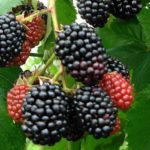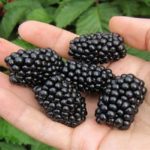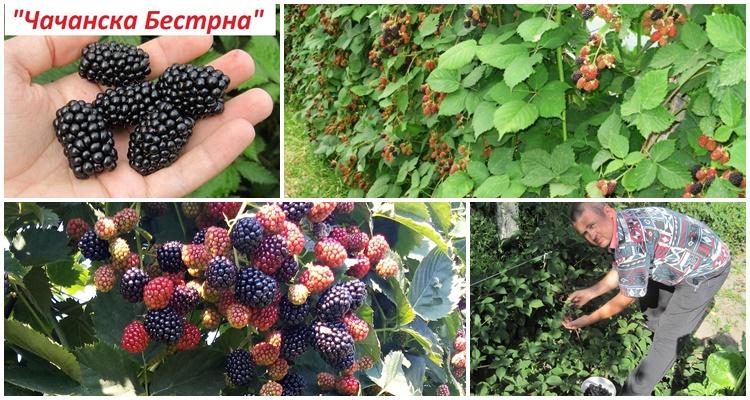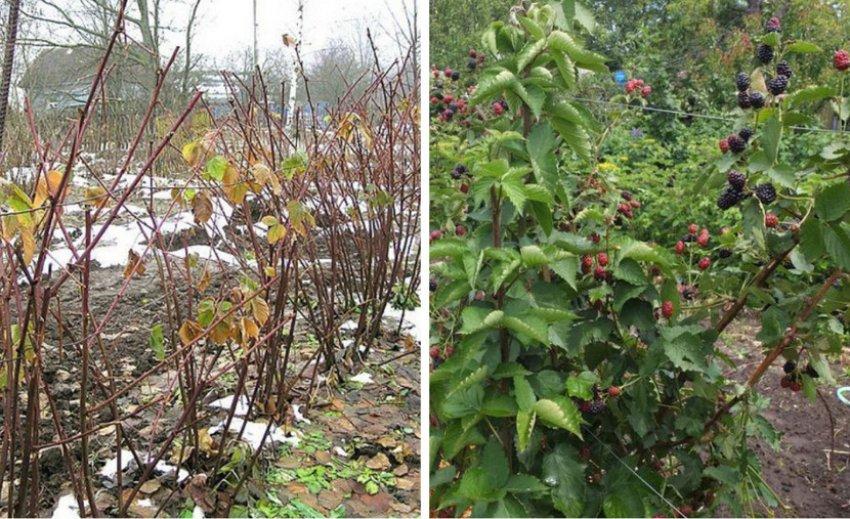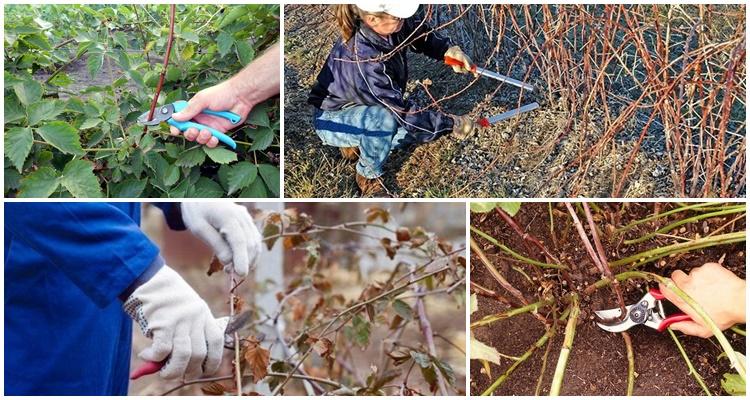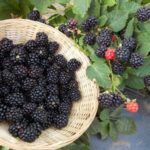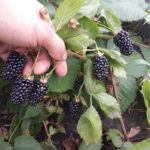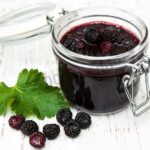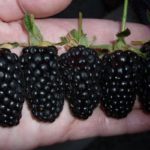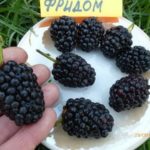Blackberries are a berry with a delicate aroma and harmonious sweet and sour taste. It contains many nutrients, vitamins and minerals that are beneficial for human health. The berry is suitable for fresh consumption, freezing and processing. Blackberries of the Chachanska Bestrna variety are especially suitable for industrial purposes, characterized by excellent taste and technical characteristics.
- History of variety selection
- Description and characteristics of blackberries Chačanska Bestrna
- About the advantages and disadvantages
- Rules for growing crops
- Selecting a location
- Landing
- Plant care rules
- Watering and fertilizing
- Pruning and tying the bush
- Preparing for winter
- Disease and pest control
- Reproduction methods
- Collection and storage
History of variety selection
Blackberry Chačanska Bestrna is a variety of Serbian selection obtained by crossing the popular varieties Black Satin and Dirksen Tornles. At the moment it is one of the most popular thornless blackberries in Serbia and other Balkan countries.
Description and characteristics of blackberries Chačanska Bestrna
The Serbian variety Chachanska Bestrna has no thorns and is distinguished by its large growth - up to 3-3.5 meters, if the shoots are not trimmed. The branches must be mounted on trellises. The berries are collected in clusters located along the entire length of the shoot.
The blackberry variety Chachanska Bestrna is distinguished by excellent yield - up to 13-14 kilograms of berries per bush. The plant begins to bear fruit most abundantly 4-5 years after planting.
About the advantages and disadvantages
It is believed that the berries acquire their full taste after the bush reaches the age of 4-5 years. They become sugary, withstand transportation better, and the yield increases.
Rules for growing crops
In order for plants to take root in a new place and begin to bear fruit, it is necessary to provide them with adequate living conditions.
Selecting a location
For planting blackberries, choose southern slopes or other places that are well warmed up and illuminated by the sun. Despite the fact that Chačanska Bestrna is capable of growing in partial shade, only in bright sun will its berries be large and sweet, and the harvests will be impressive.
The choice of soil matters. It should be slightly acidic, because blackberries do not tolerate alkaline and calcareous soils. The groundwater level is also important. The plant will not live in swampy or flooded areas.
Protection from strong cold winds is required. This is the main reason for the death of plantings in winter.
Landing
Bushes are planted in spring. Planting holes are prepared in the fall, digging to a depth of at least 40 centimeters. Organic matter is added to the pits in the form of humus or rotted loose compost, a handful of mineral fertilizers, and ash and sand are added if the soil is too dense.
Plants are planted in rows, with a distance of one and a half meters from each other. Leave at least 2 meters between rows. The planted plants are watered abundantly, and the soil under them is mulched to maintain moisture and looseness of the soil.
Plant care rules
To obtain a full harvest, plantings need to be provided with stable care.
Watering and fertilizing
Plants need moisture only during severe drought, as they have long, powerful roots. You need to feed regularly, especially during industrial cultivation. In early spring, nitrogen fertilizers are applied, most often urea or ammonium nitrate, organic matter; when the crop is formed and ripening, potassium and phosphorus-containing agents, for example, superphosphate, are added.
Berry growers need the addition of microelements, such as iron, due to the possibility of developing iron deficiency chlorosis.
Pruning and tying the bush
Blackberries of the Chachanska Bestrna variety have long shoots, so they need to be grown on a trellis. It is formed immediately after planting, driving in pipes up to 3 meters high at intervals of 4-6 meters between them. The wire is stretched onto the pipes in rows, and shoots are attached to them. The bushes must be formed, leaving up to 5-7 of the strongest and most durable ones. Plants do not need pinching.
Preparing for winter
In most areas, for the winter, the lashes are removed from the trellis, bent to the ground and pinned, covered with agrofibre. This should be done immediately before the onset of severe frosts, since in the heat and humidity the plantings may dry out.
Disease and pest control
Plants are resistant to diseases and pests; prevention should not be forgotten. To avoid massive fungal infections, especially on large plantations, plantings are treated with a 1% solution of Bordeaux mixture twice a season - at the very beginning of the growing season and after the full harvest. Spraying is not carried out on berries. The same requirement applies to the use of insecticides. If necessary, the bushes are processed before the berries are set and after they are collected.
Reproduction methods
Most common method blackberry propagation - cuttings. These can be semi-lignified cuttings cut from the mother plant, or vegetative shoots bent to the soil and pinned to it. When a new sprout appears from a dormant bud, the rooted young blackberries can be separated and planted on a school. After a year, new plants are ready for planting in a permanent place.
Collection and storage
The berries become sweet after full ripening, but release juice 3-4 days after harvest.Because of this, they need to be recycled as early as possible. This variety is excellent for amateur gardeners who do not need long transportation of products, or for large industrial enterprises with their own processing facilities. In terms of productivity, Chachanska Bestrna surpasses most popular modern blackberry varieties.

